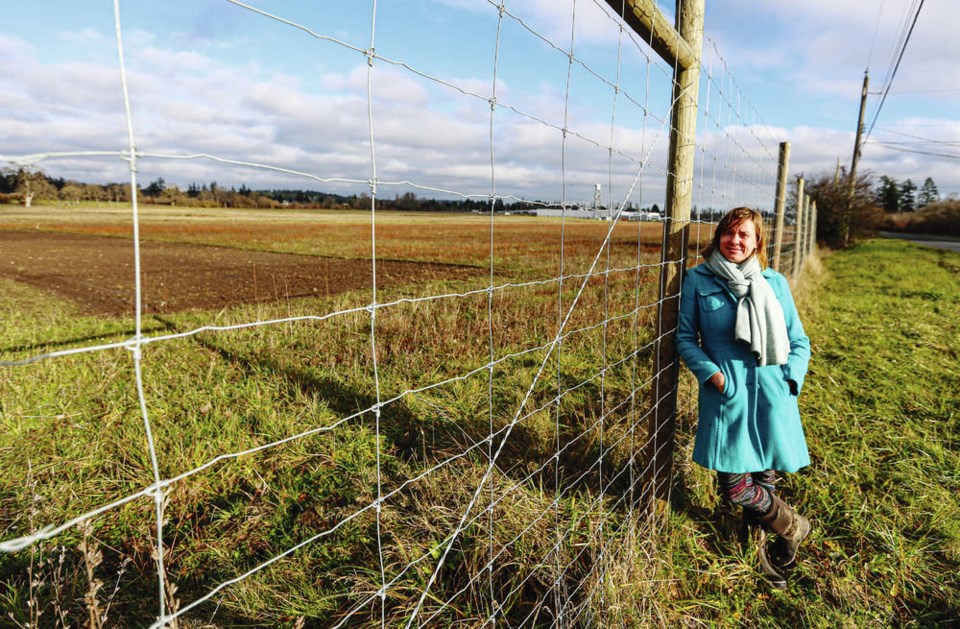The sound of hooves pounding around the big oval Sandown racetrack is just a distant memory, as North Saanich council prepares to approve on Monday a 10-year lease with a non-profit group to shepherd the 83-acre property into the next stage of its life.
The Circular Farm and Society Society of Vancouver Island’s plans for the site include agriculture, an educational program for those new to farming, community allotment gardens, children’s programs and special events.
The vision for the site on the north side of Glamorgan Road also includes partnerships, such as a plan for the Fickle Fig Farm Market of North Saanich to move livestock onto a portion of the land once fencing is installed, Jen Rashleigh, co-executive director of the society, said Tuesday.
“I really feel quite quietly confident that we will create some really beautiful ripple effects for the local food economy,” said Rashleigh, noting the pandemic has spurred public interest in locally produced products. “People have started to realize: ‘Wow, we’ve really got to get our local supply chains in place.’ ”
Rashleigh said she’s thrilled to see that a planned “Farmpreneur” program, aimed at helping people learn about the business of agriculture, has attracted 15 applications for 2021. It will include use of the greenhouse, cold storage and more, with the opportunity to work between half an acre and two acres.
Those who participate in the program will have guest mentors and help with a business plan, packaging and getting goods to market. “In some ways, growing the food is the easy part,” Rashleigh said.
The society has partnered with the new South Island Food Hub, which delivers local produce to customers, to assist the up and coming farmers, she said.
The society has already secured $90,000 in funding. The agreement with North Saanich would see the district contribute $135,000 this year and $125,000 in each of the following two years. Municipal funds would come from a portion of the taxes paid from a neighbouring commercial strip of land, once part of a larger Sandown property.
Rashleigh said Evelyn Turner joined the organization as site manager and farm mentor on Monday. The property, which is within B.C.’s agricultural land reserve, includes everything from a forested section to wetlands and grazing and growing areas.
Sandown has been the subject of debate and discussion since the last race was held in 2008. For half a century, it had been used as a racetrack owned by the Randall family.
They donated the 83 acres to the municipality and retained land for commercial development on McDonald Park Road, which is where the district money to support the plan is coming from. Half the taxes have been designated to support agriculture on the property, which was farmed prior to the racetrack being constructed.
Council approved the agreement in principle during an in-camera meeting. North Saanich Mayor Geoff Orr said the vote result was confidential.
If the contract is approved next week, the deal is likely to be inked promptly, said Orr, who favoured the society’s proposal because it’s community-oriented and includes a variety of activities. “But coming with that [is] probably a little more risk because some things are unproven.”
The society’s focus on “regenerative” agriculture also appealed to Orr. The non-profit organization Regeneration International describes regenerative agriculture as farming and grazing practices that help reverse climate change by rebuilding soil organic matter and restoring degraded soil biodiversity.
As for the long term, “We don’t know what it will quite look like. I think it will morph as the years go by as things gel or don’t gel,” Orr said.
cjwilson@timescolonist.com



